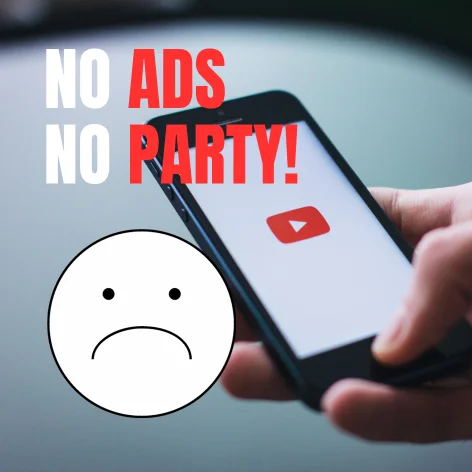Ever since YouTube came up with new ways to stop people from using YouTube ad blockers, there have been a lot of angry complaints around the internet about slowdowns, lags, and a generally bad user experience. Here is what we know:
YouTube Ads
If you are a fan of YouTube and regularly watch videos on this video sharing platform, you’ve surely had your moments of frustration with its annoying ads.
Of course, YouTube is not to blame for wanting to make good money, but sometimes these ads keep popping up in the middle, start, or end of videos, leaving users annoyed and pissed off.
And the only two ways to get rid of them are to pay for YouTube Premium $10 a month—that’s 120 dollars a year—or to use ad blockers.
What is an Ad blocker?
Ad blocker is a service that blocks all ads on YouTube. There are many services on the internet offering ad block, like Chrome ad block for YouTube, Total AdBlock, AdGuard, Ghostary, and more.
Some YouTube users don’t want to pay, so they go with ad blockers, which are easy and effective.
But well, it affects YouTube and YouTubers’ overall income. So, the company has been trying different methods to prevent adblocker usage.
What did YouTube do?
The first thing YouTube did was inform people by showing this pop-up message: “Ad blockers violate YouTube’s Terms of Service.”
And if people didn’t listen, YouTube wouldn’t let the users continue watching.

YouTube Ad Blocker Lag
YouTube sure has some annoying ads, but considering that using ad blockers is a disadvantage to the company, YouTube is trying new ways to stop it; it’s been 2 days since YouTube adblocker users’ have been reporting slowdowns and lags.
At first, the cause of YouTube’s sluggish performance and bugs was unclear. However, upon disabling ad blockers and the immediate effect on performance, everyone is pretty sure this is another way YouTube is trying to get people to stop using ad blockers and just pay for premium.
Is There a Way to Stop the Slow-Down?
There is no current solution for ad blocker users to get back to normal speed unless they stop using ad blockers or buy premium YouTube. Anyway, we will inform you of any news on this topic.
frequently asked questions
YouTube’s rules don’t specifically say you can’t use ad blockers, and using them is legal in the US, Germany, and other places. But the terms mention that users shouldn’t mess with any part of the service, including ads. So, while it’s not directly stated, blocking ads might be against the rules.
According to a post on Reddit, Google decided to slow down YouTube on purpose. To fix it, you can either turn off your ad blocker or upgrade to YouTube Premium. Many users noticed YouTube being slow and unresponsive with an active ad blocker but found it worked fine when they turned off the ad blocker.
It’s recommended to inspect whether your browser extensions, particularly those blocking ads, are impacting video playback. disabling third-party ad blocker extensions could solve the problem.
Final Thoughts
In short, YouTube’s new measures to discourage YouTube ad blockers use have upset many users. They are now facing issues like slowdowns and a less enjoyable experience.
While YouTube’s attempt to address ad blockers is understandable from a business perspective, the recent tactics causing slowdowns have intensified the frustration for ad blocker users, and there’s no clear solution in sight for now.







